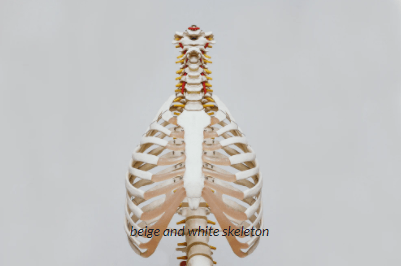Auto Accident Injuries
Auto Accident Injuries
By Dr. Anderson | November 21, 2021
One moment everything may seem fine when suddenly you’re involved in a serious collision. Most people have one thing on their mind after a car accident–their car! However, it’s important to remember that you and your injuries come first. A visit to a chiropractor should always follow an auto accident regardless of who is “at-fault.” Our chiropractors specialize in handling the types of injuries that occur with auto accidents.
HOW CAN I TELL IF I SHOULD SEE A CHIROPRACTOR?
Whiplash is one of the most common injuries sustained during car accidents—and often one of the hardest to treat. Nearly 300,000 whiplash injuries occur each year, many at low speeds. It takes only a 2.5 mile-per-hour change in speed to injure the neck.
Although half of all whiplash injuries are the result of rear collisions, they can occur from an impact in any direction. Frontal crashes account for 30 percent of motor vehicle neck injuries.
When a part of the body is whipped back and then forward beyond its normal limits, micro-tears can develop in the surrounding ligaments. Yet many accident victims don’t notice any pain at first. It’s not until the micro-tears start to swell that the symptoms set in.
Soft-tissue injuries like whiplash can take a long time to heal. One study found that more than 70 percent of people who visited the emergency room after a car accident were still in pain six weeks later. Other researchers have noted that nearly half of whiplash sufferers continue to experience symptoms three months later, while 25 percent remain symptomatic for six months.
Without proper treatment, some injuries can continue to cause pain for years. As soft tissue injuries heal, they develop scar tissue. If the spine is not aligned and full range of motion isn’t recovered before scarring sets in, it can ultimately inhibit normal functioning and even lead to spinal degeneration.
HOW CHIROPRACTIC CARE WILL HELP YOU
Because a chiropractic school curriculum teaches students how to treat back and neck pain without pharmaceutical help, a doctor of chiropractic is uniquely positioned to help car accident victims avoid the prescription drug cycle.
Using a variety of drug-free techniques, from spinal adjustments to electric muscle stimulation to rehabilitative exercises, chiropractors can:
Relieve pain. Soft-tissue injuries may take months to fully heal, but a chiropractor can often provide pain relief much quicker than that. Some car accident victims report up to an 80 percent reduction in discomfort after just a few weeks of chiropractic care.
Restore mobility. The soreness and stiffness from a motor vehicle injury can inhibit movement. Chiropractors work with patients to help get them moving again as quickly as possible so they can regain full range of motion before scar tissue develops.
Support long-term healing. The muscle weakness resulting from a car accident can leave patients vulnerable to re-injury. Chiropractic care often involves rehabilitative exercises that improve flexibility and strengthen the muscles surrounding the spine.
Visiting a doctor of chiropractic as soon as possible after an auto accident can boost a patient’s chances of making a fully recovery—without resorting to prescription drugs.
WHAT IS SPINAL DECOMPRESSION THERAPY AND HOW CAN IT HELP YOU?
Back pain is one of the most common types of pain, as almost everyone has suffered from it by the time they reach their late twenties. No matter how common back pains are, most people still hope to reduce or even fully cure back pain through nonsurgical spinal decompression.

WHAT IS SPINAL DECOMPRESSION?
Spinal decompression is basically motorized traction that can help reduce mild or even severe back pain by gently stretching the spine to take the pressure off the vertebrae.
Once this pressure from the vertebrae releases, the bulging discs retract, which decreases the pressure on the back nerves and facilitates the flow of oxygen, water, and nutrients.
Regular treatments can help treat neck and back pain, worn spinal joints, degenerative disc disorders, diseased or injured nerve roots, etc.
IS SPINAL DECOMPRESSION EFFECTIVE?
Spinal decompression has been around for several hundred years and has different effects on different people. For some, it has proven to be pretty useful and helped with back pains. On the other hand, some were not really satisfied with the results. There are some instances, especially in severe pain, where surgery is the only option left. However, if it is not so severe or is in the initial stages, this procedure has helped many people!
THE EXISTING STUDIES SHOW POSITIVE RESULTS
Although there is not enough research to support the claim that spinal decompression therapy is highly effective, some studies still show positive results and consider it to be a great alternative to surgeries and drugs.
IS NONSURGICAL SPINAL DECOMPRESSION SAFE?
As there have been limited studies on nonsurgical spinal decompression, it is difficult to say whether it is entirely safe or not. The keyword here is “completely,” as it is still far safer than surgeries and possibly medicinal drugs too!
SPINAL DECOMPRESSION METHODS
Spinal decompression can be done in two different ways, either nonsurgical or noninvasive. Nonsurgical decompression simply works by stretching the spine to relax the vertebrae. On the other hand, noninvasive decompression works with a traction table with a separate upper and lower body portion for treatment.
SPINAL DECOMPRESSION DURATION
Like all other therapies, the duration for spinal decompression depends on the condition of the patient. Typically, it takes anywhere between 6 to 8 sessions before the patient starts to feel the difference in pain and severity levels. In other cases, especially if the patient is an aged person, they might start feeling the difference after over 20 sessions!

As far as the session itself is concerned, it takes about 20 to 30 minutes and is pretty comforting and relaxing for the patient that some even sleep during it. Also, the treatment is uniquely tailored according to the overall condition, age, sex, and other variables of the patient.
SPINAL DECOMPRESSION ALONE
One thing that distinguishes surgical spinal decompression from nonsurgical one is the fact that the nonsurgical procedure aims to fix the root of the problem, rather than just the surface of the problem. Therefore, with medications and surgeries, the underlying cause of the pain stays the same, and it merely fixes the surface problem, which might give you relief, but for some time only. Also, surgical spinal decompression costs way more as compared to the nonsurgical one.
Apart from this, spinal decompression also helps with a handful of other things such as core strengthening, core flexibility training, electric stimulation, digital x-rays, and simply massaging!
IS SPINAL DECOMPRESSION THERAPY RIGHT FOR YOU?
Whether spinal decompression therapy is good enough for you or not depends on your personal preference. How much are you willing to invest in for your back health? How severe is the pain? Can you afford the surgery and other medical costs? Do you have enough patience to wait for results to show over time, or do you want instant relief (by surgery)?
These are just a few questions you need to ask yourself and then decide whether nonsurgical spinal decompression therapy is good for you or not. Moreover, you can also consult a doctor and ask for their recommendation according to your condition. After all, an expert medical advice always helps! Also, do your research. See if the effects of spinal decompression therapy would help you or not!
WHAT IS SPINAL DECOMPRESSION THERAPY?
Nonsurgical spinal decompression treatment helps relieve back pain with a decompression table by which a bulged disc tissue moves back in its place and starts to heal. It intends to help patients with severe spinal pain because of degenerating, bulging, or herniated discs. The treatment itself stretches the spine to create space within the disc and allow the fluid to move to its usual place.
With regular nonsurgical therapy, you can potentially relieve chronic arm, back, leg, and even neck pain and allow nutrients, oxygen, and blood to flow freely for quicker and long term healing. Moreover, it is an inexpensive method of reducing the pain’s severity as it has minimal costs compared to surgeries, which include microdiscectomy and laminectomy.
WHAT IS A SPINAL DECOMPRESSION TABLE?
As the name itself suggests, it is the main instrument for the treatment. There are two types of spinal decompression tables:
- The first one has a pulley system with cables that creates a pull on the patient’s body.
- The second one comes with a lower and an upper body portion that moves independently.
Among the two, the latter one is considered to be more effective for more patients, as it prevents muscle guarding!
The patients are strapped to the table using belts or harnesses while keeping them comfortable with other props such as pillows. Once everything is in place, the two portions of the table start pulling apart, with the poundage of the pull set according to the physical ability of the patient and the type of decompression.
Some of the high-tech tables include multiple sensors to figure out which muscles are resisting the stretch and which are not. As soon as the muscles start to resist, the table reduces the pull’s poundage until the muscles relax. The table then repeats the process until the patient feels some relief.
HOW A SPINAL DECOMPRESSION TABLE WORKS
With the help of computer technology, a spinal decompression table creates a negative intradiscal pressure in the spine. Before the therapy begins, the technician selects the appropriate decompression program for the patient according to their condition and physical health. Once done, the patient is asked to rest on the table so the treatment can be initiated.
As the spine is stretched on the table, a negative pressure is formed in the spinal discs, which retracts and repositions the disc material, resulting in pain relief. Moreover, it also leads to an influx of nutrients to the disc to promote further comfort and a quicker healing process in the long term.
The better decompression tables also consider the natural resisting of the muscles to the stretch, known as muscle guarding. The table smartly releases and increases the pressure to help relieve the pain without hurting your muscles even more.
SPINAL DECOMPRESSION PROTOCOL
The appropriate physical therapy protocol depends on the patient, as there is no fixed time for the treatment. Depending on the symptoms and severity of the pain, the treatment can be pretty long or shorter than you might expect. However, you might expect about 10 to 12 therapy sessions, if not more, to feel a positive change. Moreover, there might be some follow-up treatments required too!

Your first visit would determine how many more sessions you would require, considering the x-rays and sometimes even MRI. In a nutshell, your protocol will be decided according to the diagnosis! As far as each session is concerned, you will be lying on the table strapped for around 30 minutes while your body goes through the procedure.
After each session, your progress will be recorded and compared with previous results to see whether you are recovering or not. Some high tech tables even store patient protocols and profiles for each session!
CANDIDATES FOR SPINAL DECOMPRESSION THERAPY
Any person who suffers from any sort of back pain due to herniated or bulging discs can go for the therapy. The doctor/technician at the clinic would then determine whether you actually require the therapy or not. However, make sure you are thoroughly examined before you start the treatment as there are some contraindications as well, such as:
- Pregnancy
- Spinal fusion
- Spinal tumor
- Broken vertebrae
- People with spinal implants or artificial discs, etc.
SPINAL DECOMPRESSION THERAPY RESULTS
Similar to all other medical treatments, the results for this therapy also depend on multiple factors, with the most common ones being the doctor, patient, and the techniques used.
It is pretty unlikely that you feel a significant difference after the first session. A more noticeable difference in pain levels takes several therapy sessions!
SPINAL DECOMPRESSION TABLE RESEARCH
Similar to the research for spinal decompression therapy, studies for the table are pretty insignificant too. However, the little studies carried out still show benefits to patients who suffer from mild or even severe spinal pain. For instance, a study by the University of Texas and Rio Grande Regional Hospital shows the positive effects of spinal decompression tables in the therapy.
Moreover, in another study from 1998, this form of therapy proved to be effective for a staggering 71% of the patients. Similarly, another study showed how just eight weeks of therapy helped patients with over six months of acute spinal pain.
Keeping all the studies in mind, it is safe to say that the spinal decompression table has proven to be an extremely useful instrument for reducing mild or even acute spinal pain despite being preliminary studies.
SPINAL DECOMPRESSION TABLE ALTERNATIVES
In case you are skeptical about using the spinal decompression table for treating the pain, there are still plenty of alternatives available to you. For instance, you can go for invasive surgery, physical therapy, manual chiropractic manipulation, yoga, acupuncture, steroid injections, etc.
However, keep in mind that the effectiveness of all these alternatives varies according to the patient and their diagnosis. Also, the costs vary too, as some might be cheaper and some a bit more expensive as compared to the table. Better diet, more exercise, a healthy routine, and other everyday factors also play an essential role in how well you recover using these alternative methods.
FAQ
Is Spinal Decompression Safe?
Spinal decompression is safe, especially when compared with surgeries and other medicinal drugs. Although it varies for different patients, it is considered to be more or less safe for most of them. However, if you are pregnant, have artificial discs or broken vertebrae, you might have to consult a doctor before going for the therapy.
How long should you do spinal decompression?
There is no set time for spinal decompression therapy, as it varies according to the condition of the patient. On average, it might take somewhere between 8 to 10 sittings before you feel a positive change in your body. For others, it might take over 20 sessions before they feel a difference.
What is spinal decompression used for?
Spinal decompression helps patients reduce spinal pain that might be caused due to bulging discs or other reasons.
Is Spinal Decompression painful?
For the most part, it is not painful at all. Some patients even sleep during the therapy session as it is so relaxing for most of the time. However, it also varies according to the doctor and the method used for therapy.
NOT A STONEBRIDGE PATIENT?
We want to invite you to a free consultation! We offer highly personalized, tailored to your needs, and affordable care. Send us a message or call now.
If you are already a StoneBridge Chiropractor patient, would you do us a huge favor and leave an honest review on Google? It really helps us connect with other great patients just like you.
I’m Dr. Anderson — thanks for reading!